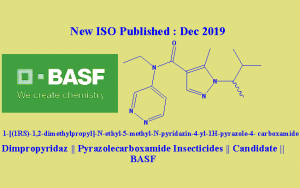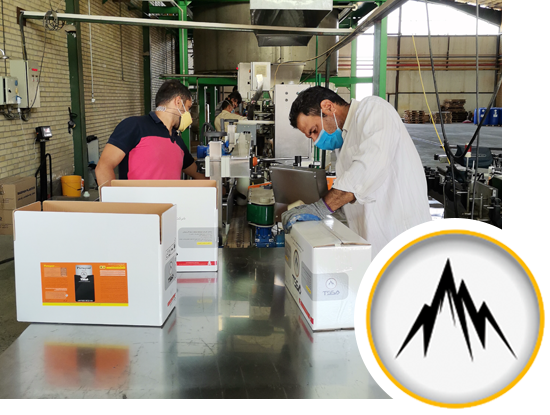Mixing poisons and fertilizers in the spraying tank saves time, energy, and also reduces the costs of spraying solutions, so that with one spraying, some pests or diseases can be controlled at the same time. In addition, he also fed the plant. It is important to check the possibility of mixing different products together before mixing. Mixing these materials regardless of their ability to mix may lead to serious problems such as reducing the effectiveness of some raw materials, physical incompatibility between different compounds, separation, clogging of the spraying system, formation of foam, crystals, and most importantly plant burning.
At the time of mixing, all the factors that cause incompatibility should be carefully considered. Even when using a combination that has already been proven to mix well, incompatibility may occur due to the quality of the water used. Some waters may contain iron, calcium and other elements that will be involved in the incompatibility of chemical substances. Some herbicides (amine salts) may react with calcium and magnesium in water and form insoluble salts that reduce the effect of pesticides.
Some insecticides affect the regulation of the concentration of calcium ions in the body of insects (calcium homeostasis). Mixing these insecticides with calcium fertilizers will reduce the effect of these insecticides.
The stability of the mixture in the spray tank depends on the pH of the water. The optimal acidity of water for pesticides should be 6 to 7. If the pH is out of this range, acidifiers or buffers should be used.
Some chemicals cannot be mixed together due to physical incompatibility. Physical incompatibility can be caused by incorrect mixing, insufficient stirring or lack of stable emulsifier in some EC formulations. The mixture of these chemicals needs strong stirring and addition of surface active substances (surfactants, chemicals, etc.). Otherwise, sediment will be formed or two phases will be mixed. Mixing the WP formulation with EC with insufficient mixing may form a soft paste with an oily layer that floats to the top of the spray tank.
Special attention should be paid to mixing EC formulations with liquid fertilizers. Sometimes products that mix well and can be mixed should not be consumed together because the effect of the mixture of these two substances may be different from the effect of consuming each of these substances alone.
In order to reduce costs, farmers usually combine different types of fertilizers without considering their characteristics such as purity, solubility, incompatibility or benefits of some materials such as activators, buffers, chelates, etc. Adding nitrogen fertilizers in the form of urea and ammonium in the poison tank may cause high pH and incompatibility with pesticides. On the other hand, adding phosphorus fertilizers in the form of phosphate or phosphoric acid to the poison tank creates a mixture with a low pH.
It is very important to pay attention to the order of adding materials to the spraying tank and it should be based on the order indicated on the label of the poison or fertilizer. In some cases, whether the materials are physically compatible or not will depend on the order in which they are dissolved in the poison tank. This is especially true for WP toxins. A mistake in the order of mixing may lead to incomplete dissolution and prevent the uniform distribution of poison in the spraying tank.
Usually, on the label of poisons, they provide precise methods for mixing materials. If this information is not available, a miscibility test must be performed. The miscibility test has different methods and purposes and is done in a small container before mixing the materials in the poison tank.
Stages of miscibility testing:
First step: Prepare a medium and completely clean container like a glass bottle. Use the same water that you use when making the main mixture. Pour the water in the container and add each of the ingredients to the container with the ratio that will be poured into the main tank later.
The order of adding pesticides according to the formulation from left to right:
WP – DF – WDG – F – FL – ME – EC – S – SP
In the case of fertilizers, the miscibility test must be done; Because some of them dissolve better when they are added in the tank first, and some others are the opposite when they are added at the end.
First, some water should be poured into the intended container.
Add wettable powders (WP) and other water-dispersible powder and granule formulations (WDG).
Stir completely and add the rest of the water.
Liquid materials such as soluble formulations, surfactants and colloidal suspensions of emulsifiers should be added at the end.
Second step: Shake the container well. Touch the sides of the container, if the sides of the container are heated, the materials may have reacted chemically with each other, and this means that the materials should not be mixed with each other.
Allow the mixture to stand for 15 minutes and check the temperature again.
If additional materials are seen on the surface of the mixture or sediment is formed at the bottom of the container (except for WP formulations), the desired materials are probably not compatible with each other.
Finally, if there are no signs of incompatibility, test the mixture on a small surface to make sure that the resulting mixture will not cause burns or reduce the effect of the materials.
Chemical compatibility cannot be determined just by mixing products and in a simple test like what was said before. Some products can easily be mixed together, but they can cause antagonism, which results in a decrease in the effectiveness of toxins. Or it may be synergistic and increase the effectiveness of poisons. When several poisons or fertilizers are mixed together, crop damage can occur. Therefore, the label of poisons can be the best source of information about the desired compounds. Also mesh
Mixing fertilizers:
Some fertilizers tend to create insoluble compounds and sediments. Sediments separate nutrients and prevent them from being absorbed by plants or cause clogging of irrigation systems. For example, fertilizers containing calcium should not be mixed with fertilizers containing sulfate and phosphate. In order to better understand this issue, we will explain it by mentioning some examples:
The farmer wants to use 20-20-20 complete fertilizer in his tomato farm through the irrigation system, and also plans to add calcium nitrate fertilizer to prevent rotting of the flower bed. But the simultaneous use of these two fertilizers creates problems. The reason is that calcium in calcium nitrate with phosphate in ammonium phosphate in complete fertilizer may form calcium phosphate which is insoluble in water.
The soil test has shown that tomato plants may be suffering from manganese deficiency. Magnesium sulfate is recommended to solve this problem. The farmer should avoid the simultaneous use of complete fertilizer and magnesium sulfate through the irrigation system because the magnesium in magnesium sulfate forms an insoluble compound in the vicinity of the phosphate present in complete fertilizers. In both cases, magnesium sulfate and calcium nitrate should be used alone.
Agriculture plans to use calcium nitrate and magnesium sulfate fertilizers simultaneously in the irrigation system to supply magnesium and calcium to its plants during the season. The simultaneous use of these two fertilizers also leads to the formation of calcium sulfate, which has a very low solubility.
Agriculture plans to spray a high phosphorus fertilizer during the flowering stage to increase flowering and improve fruit formation. He also wants to spray a micronutrient mix fertilizer because plant tissue tests have shown a lack of boron and zinc. However, many elements such as boron, zinc, copper and iron become insoluble in a solution containing phosphate, especially if they are not chelated. High phosphorus fertilizers should not be combined with micronutrient fertilizers.
Because it is almost impossible to prepare a list of fertilizers that cannot be mixed together, it is recommended to perform a miscibility test before doing any mixing.
Preparation and compilation:
Sara Mehrabi – technical manager








